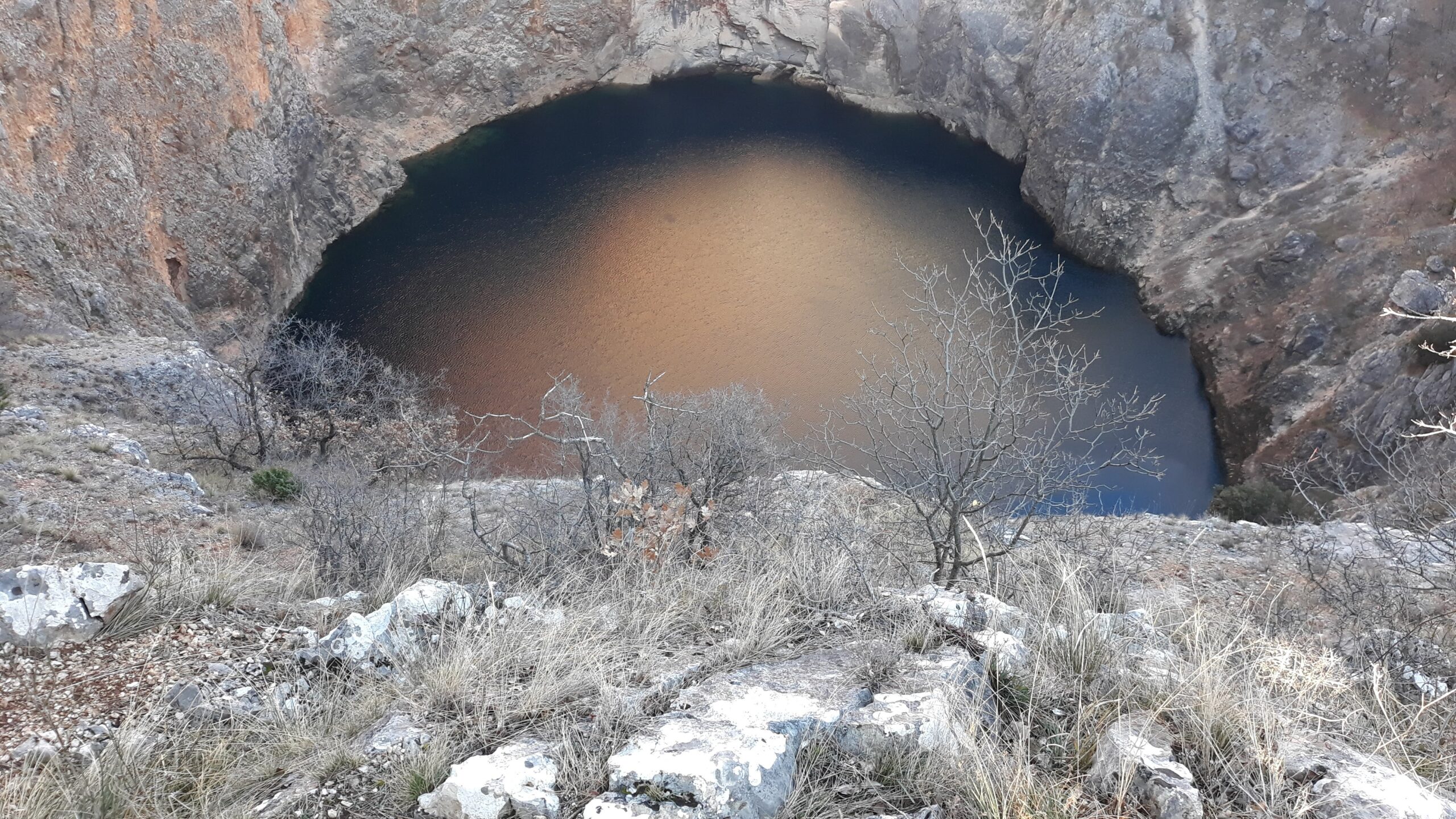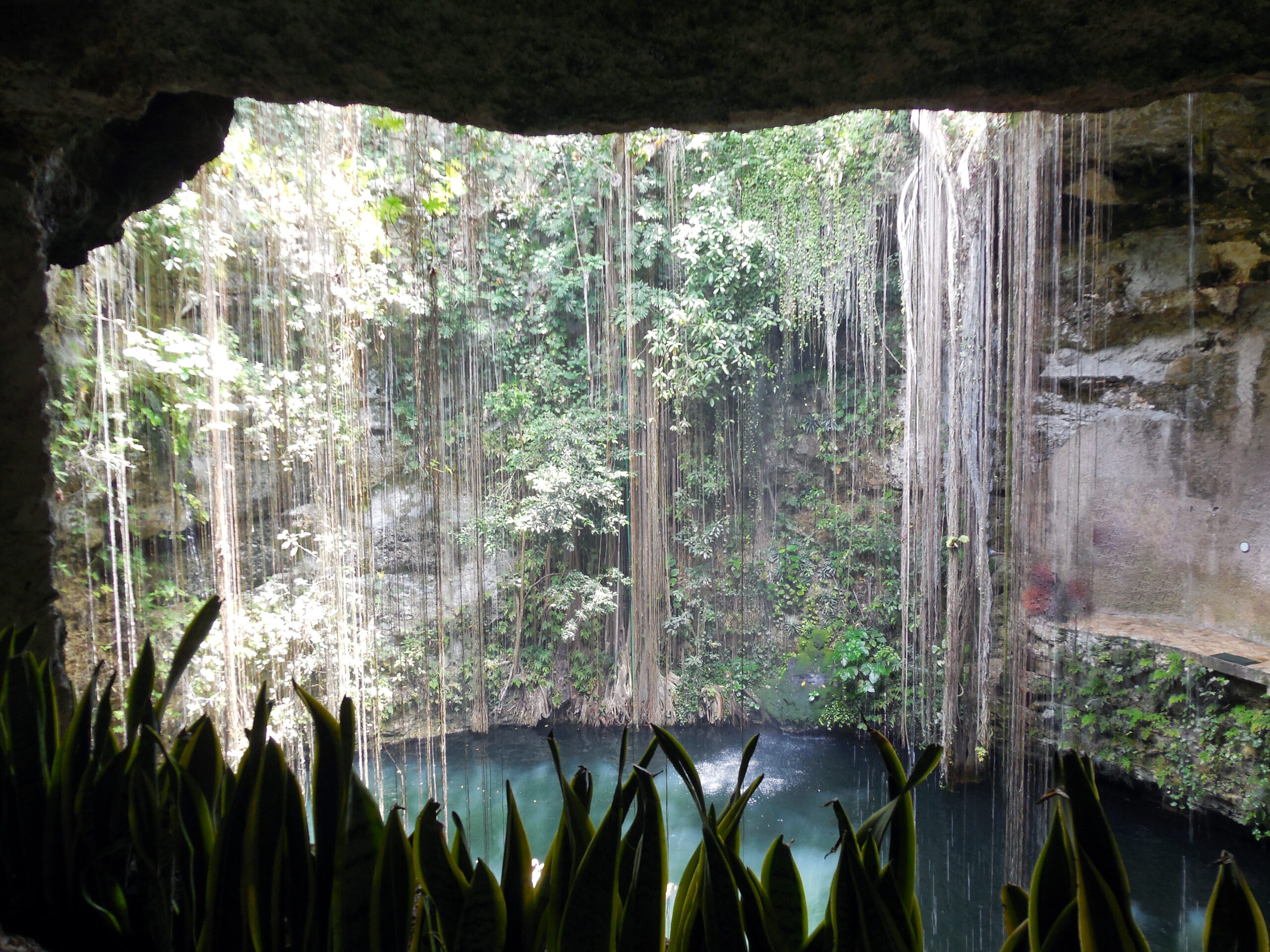Sinkholes are some of the most dramatic natural formations on Earth, often appearing as massive pits that drop into the ground, leaving behind awe-inspiring geological features. Formed over centuries, these colossal cavities reveal the powerful forces of nature that slowly erode bedrock beneath the surface. Here are some of the largest sinkholes worldwide and the fascinating details behind them.
Xiaozhai Tiankeng – China

Xiaozhai Tiankeng, also known as the Xiaozhai Heavenly Pit, is the world’s deepest sinkhole, located in Fengjie County, China. This impressive natural formation measures about 662 meters deep and spans approximately 511 meters across. The sinkhole formed from the dissolution of limestone in a karst landscape over millions of years. Inside the pit, lush vegetation and a unique ecosystem thrive, including small waterfalls and rare plant species. Xiaozhai Tiankeng is a favorite among geologists and tourists alike, drawing attention for its immense size and the mysterious world hidden within its depths.
Dean’s Blue Hole – Bahamas

Dean’s Blue Hole, located near Long Island in the Bahamas, is the second-deepest blue hole in the world, plunging to a depth of 202 meters. The sinkhole measures around 30 meters across at the surface but widens significantly as it descends into the depths. Surrounded by turquoise waters and white sand beaches, Dean’s Blue Hole is a popular destination for freediving and snorkeling. The underwater cave system within the sinkhole offers breathtaking views, with stalactites, tunnels, and diverse marine life. Known for its vertical descent and crystal-clear waters, Dean’s Blue Hole captivates visitors and remains a hotspot for diving competitions.
Red Lake Sinkhole – Croatia

Red Lake, situated near the town of Imotski in Croatia, is a striking sinkhole known for its reddish cliffs and deep blue waters. This karst lake is around 530 meters deep, making it one of the deepest sinkholes and freshwater lakes in Europe. With a width of approximately 200 meters, the sinkhole’s vertical cliffs and its distinctive color add to its dramatic appearance. The reddish hue of the surrounding cliffs comes from the high concentration of iron oxide in the rocks. Red Lake is a popular attraction for nature enthusiasts and divers, drawn by its scenic beauty and geological intrigue.
Mount Gambier Sinkholes – Australia

Mount Gambier in South Australia is famous for its collection of sinkholes, with several notable examples around the city, including the Umpherston Sinkhole and the Cave Gardens. These limestone sinkholes vary in depth, with the deepest exceeding 50 meters and surrounded by lush vegetation. Many of the sinkholes were formed by the collapse of underground caves, creating lush sunken gardens that attract visitors. With well-maintained viewing platforms and garden landscapes, the Mount Gambier sinkholes are popular tourist sites that blend natural beauty with community spaces.
Hranice Abyss – Czech Republic

Hranice Abyss, located near the town of Hranice in the Czech Republic, holds the record as the world’s deepest underwater freshwater sinkhole. It extends at least 519 meters below the water’s surface, with explorations still ongoing to determine its exact depth. The sinkhole sits in a karst landscape, where limestone dissolves over time to create deep chasms. Due to its unique structure, Hranice Abyss contains both freshwater and carbon dioxide-rich thermal water, creating a challenging environment for explorers. The mysterious depths and complex geology of Hranice Abyss continue to attract scientists and cave divers from around the world.
Ik-Kil Cenote – Mexico

Ik-Kil Cenote is a breathtaking natural sinkhole near Chichen Itza in Mexico’s Yucatán Peninsula. This almost perfectly circular cenote measures approximately 60 meters in width and descends to a depth of 40 meters, with water filling most of its depth. Known for its stunning turquoise waters and hanging vines that cascade down its limestone walls, Ik-Kil is a popular spot for swimming and diving. The cenote’s constant water temperature and scenic surroundings make it a must-visit attraction for tourists exploring Mexico’s rich Mayan history. Its mysterious beauty and accessible location near ancient ruins add to its allure.
Devil’s Sinkhole – Texas, USA

The Devil’s Sinkhole in Texas is a vertical cavern located near the small town of Rocksprings. This striking natural feature spans about 12 meters wide at the surface but expands significantly as it drops, reaching depths of approximately 122 meters. The sinkhole is a known haven for large bat colonies, with thousands emerging at dusk during summer. Devil’s Sinkhole formed in limestone bedrock and is now protected as a natural landmark, attracting adventurers and wildlife enthusiasts alike. Despite its narrow opening, the sinkhole’s cavernous interior offers an impressive underground world worth exploring.
The Bimmah Sinkhole – Oman

The Bimmah Sinkhole in Oman is a stunning turquoise water-filled sinkhole situated near the coast of the Arabian Peninsula. It measures about 50 meters wide and reaches depths of up to 20 meters, offering a natural swimming area for locals and tourists. The sinkhole, thought to have formed from the collapse of an underground limestone cave, features crystal-clear water due to the mix of fresh and saltwater sources. Surrounded by a public park, the Bimmah Sinkhole is accessible and beautifully landscaped, making it one of Oman’s popular natural attractions. Its vibrant waters and scenic location near the sea make it a unique spot for relaxation and swimming.
Guatemala City Sinkhole – Guatemala

The Guatemala City Sinkhole is an infamous urban sinkhole that formed suddenly in 2010 in Guatemala’s capital city. It is around 20 meters wide and plummets 100 meters into the earth, creating a terrifyingly deep vertical shaft. This catastrophic collapse swallowed an intersection, damaging nearby buildings and infrastructure. The sinkhole’s formation is believed to be a result of weak volcanic rock combined with poor drainage and heavy rainfall. While now stabilized, this unexpected and dramatic event highlighted the vulnerability of cities built on porous, unstable terrain.
El Zacatón Sinkhole – Mexico

El Zacatón is one of Mexico’s deepest water-filled sinkholes, located in the northeastern region of Tamaulipas. It stretches 116 meters across and reaches a remarkable depth of 339 meters, making it one of the world’s deepest known sinkholes. Surrounded by lush vegetation, the sinkhole is filled with sulfur-rich, warm water, creating unique conditions for microbial life. Known for its floating islands of vegetation, El Zacatón’s rich ecosystem attracts scientific interest. The sinkhole is also notable for its challenging conditions, making it a popular spot for exploration and scientific study.
Wink Sink – Texas, USA

The Wink Sinkholes, located in Winkler County, Texas, are two prominent sinkholes known as Wink Sink No. 1 and No. 2. These formations measure around 110 meters and 270 meters in width, respectively, and continue to grow over time. Initially formed due to oil extraction activities that caused the collapse of underground rock, these sinkholes have become a cautionary symbol of human impact on geology. With their expanding size and unstable surroundings, the Wink Sinks are now heavily monitored to prevent potential hazards.
Dead Sea Sinkholes – Israel and Jordan

The Dead Sea Sinkholes along the shores of Israel and Jordan are a striking and ongoing geological phenomenon. These sinkholes vary widely in size, some reaching up to 25 meters deep, and appear as the Dead Sea continues to recede due to water diversion. As salt deposits dissolve beneath the earth’s surface, these sudden collapses form, creating a patchwork of craters near the shoreline. The growing number of sinkholes now pose a hazard to the region, impacting local tourism and infrastructure. Despite the dangers, the Dead Sea Sinkholes highlight the dramatic environmental changes in the area and remain a subject of significant research and conservation efforts.
This article originally appeared on Rarest.org.
More from Rarest.org
10 Largest Lakes in the United States

The United States is home to some of the largest and most iconic lakes in the world, each with its own unique ecosystem, recreational opportunities, and geographical significance. Read More.
10 Oldest Buildings in America

America is home to some of the oldest buildings that still stand strong today. These structures offer a glimpse into the country’s deep history. Read More.
10 Largest Eagles in the World

Eagles are among the most powerful birds of prey, known for their impressive size and sharp hunting skills. Read More.
